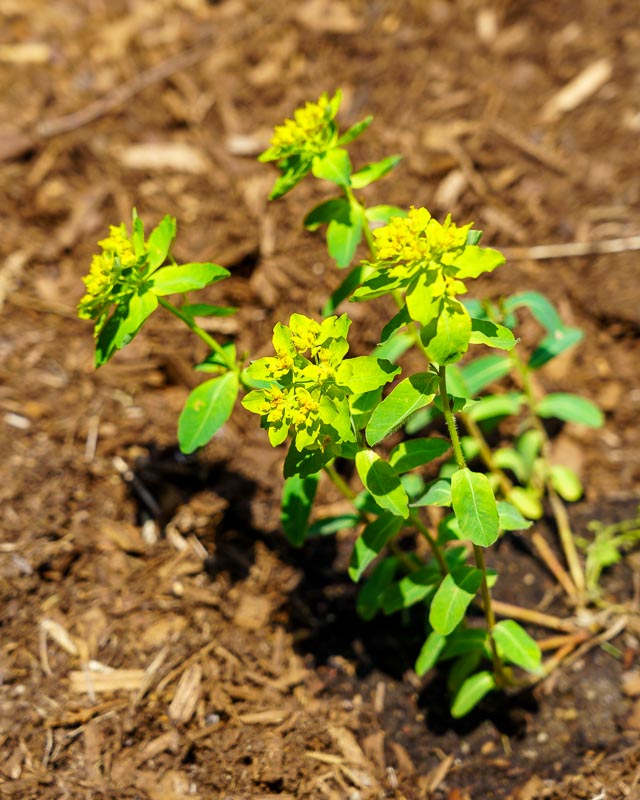Cushion Spurge
Common Name:
Cushion Spurge
Botanical Name:
Euphorbia polychroma
Mature Size:
12” – 18” tall and wide
Sun Exposure:
Full sun
Soil Type:
Chalk, Clay, Loam, Sand
Soil pH:
Acid, Alkaline, Neutral
Bloom Time:
April to May
Flower Color:
Yellow
Care:
Best grown in dry, well-drained soils in full sun. Appreciates some light afternoon shade in hot summer climates. However, clumps tend to open up and lose their attractive cushion shape in too much shade. Quite tolerant of poor soils, including rocky, sandy ones. Freely self-seeds. Promptly remove spent flowers (shearing plants to shape is one option) to prevent any unwanted self-seeding.
Soil:
Ideally, the soil should be well-drained, calcareous and slightly dry to fresh. Heavy soil, in which water is stored, should be vigorously worked up with sand. It is important that the cushion spurge does not stand wet and therefore does not suffer from waterlogging.
Water:
Water the perennials well after planting. After that, it is no longer necessary to water the plant additionally. You should only give the cushion spurge water during long periods of dry and hot periods – but only a little.
Temperature and Humidity:
While the plant grows best in full sun, it also appreciates light afternoon shade in areas where summers are very hot. The ideal location for planting Euphorbia polychrome is one where it gets full sun in the morning and some partial shade in the afternoon.
Fertilizer:
Use cactus fertilizer if you want to provide your perennial with additional nutrients for good growth.
Pruning:
A pruning of Euphorbia polychroma is usually not necessary. If you still want it, you should do it in autumn.
Overwintering:
Cushion spurge is commonly known as hardy down to -20 °C / -5 °F. However, various circumstances can endanger the perennial during the cold season. The winter sun can lead to more moisture evaporating from the soil and the perennial. Before the first frost, therefore, cover the plant with fir branches. In early spring, take off the winter protection again. So there can be no rot.
Source:
https://www.live-native.com/cushion-spurge-planting-care-and-tips/
https://plantcaretoday.com/cushion-spurge.html
